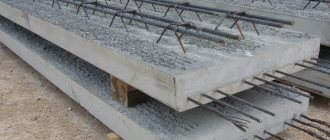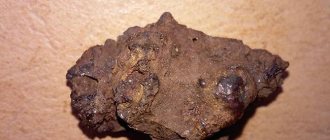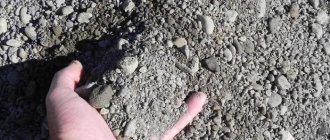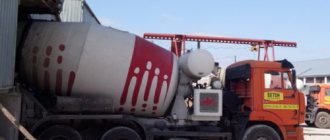This building material is a type of Portland cement. The composition is intended to perform work on isolating wells from groundwater pressure during oil and gas production. It has good technical and construction characteristics. The requirements for such cement are determined by state standards 1581-96.
Composition and features
Well cement is a binder composition that is almost indistinguishable from Portland cement. However, there are increased requirements for clinker content. In cementing, the proportion of clinker can reach 100%. The required admixture is up to 3.5% ground gypsum.
To improve the properties of the material, you can supplement it with various mineral elements, which in total will amount to no more than 12% of the total mass. There should be no more than 10% limestone, slag - up to 20%.
The conditions, standards of substances and purpose for cement cement are recorded in GOST 1581. The type of substances is determined by the percentage of refractory admixtures and other components. The recipe for ready-made cement may vary depending on the manufacturer.
Features of well cement:
- fine grind;
- accelerated hardening process;
- increased mechanical strength and rigidity;
- when diluted with water, the consistency differs from that of other types of cement.
There are increased requirements for the fluidity rate in building codes and regulations. The speed of movement of the cement solution should reach 1.5 m/s with small sizes of technological holes. Due to the extremely high pressure in places where this composition is used, sand, reinforcement, formwork, and crushed stone are not added. Therefore, the binder is the only component.
The peculiarities of the use of such a composition determine high requirements for it as a building material. It should reduce the pressure exerted on the pipeline or other part that is being insulated. In addition, the cement slurry must have a higher solidification rate, which is achieved by introducing various additives during manufacturing.
Composition
The basis for the production of well cement is crushed clinker (from 80%) and gypsum (2-3.5%). Various minerals are added to them to prepare working mixtures with desired properties. Several types of cement mortars are used:
- Hygroscopic. The additive is triethanolamine.
- Sandy. Gypsum and quartz sand are added to the main composition.
- Weighted. Weighting additives include iron ore minerals (magnetite, hematite, sleeper).
- Salt resistant. Finely ground quartz sand added to the solution creates a material that protects pipes from corrosion caused by groundwater with a high salt content.
Special cement Portland cements include a sulfate-resistant mixture that is resistant to aggressive environments.
In difficult geological conditions, including if there are layers in the section that are absorbent or prone to hydraulic fracturing, deep wells are cemented using lightweight solutions. Lightweight oil well cement is made by introducing additives that reduce the density of the composition - ash, tripoli, diatomite, aluminosilicate microspheres, etc.
The density of light cement cements intended for work at great depths and for repairing damaged areas of the shell is even lower. Such materials are easier to pump, they have high adhesion and adhere well to the old cement shell of the pipe, and are able to fill voids and cracks. Additives include kaolin, hollow aluminosilicate microspheres, etc.
Difference between cement and expansion cement. When cementing wells in porous and loose rocks, it is necessary to create a shell of cement stone that is not prone to shrinkage.
Expanding cement contains additives, due to which chemical reactions occur in the cement mortar to form crystalline products. Thus, the solution increases in volume during the hardening process, and the resulting stone has a dense structure. Conventional cement cements do not expand during hardening.
Main technical characteristics
These will depend on the type of binder, the manufacturer and the presence or absence of additives.
Performance characteristics:
- Mechanical strength after 8 hours reaches 2.1-10.3 MPa, depending on temperature. The maximum value is observed at 60 °C.
- Bending rigidity varies in the range of 0.7-3.5 and depends on the manufacturer and brand.
- Residual weight on a sieve with mesh No. 0.08 is no more than 15%.
- Specific surface – no more than 270 m²/kg.
- The moisture separation index should not exceed 10.
- Spreadability under the influence of moisture varies depending on the type. Unplasticized cement cement can spread at a speed of up to 200 mm. Plasticized - up to 220.
- The composition hardens to a consistency of 30 in 90 minutes or more.
All characteristics must be indicated in the manufacturer's mark along with information about the production date. Portland cement loses its properties after six months or when exposed to air.
The rate of solidification will depend on the temperature in the well and the percentage of alkaline substances in the composition. If the temperature exceeds 60 °C, the hardening time may vary.
Quick drying
Working with large concrete structures and the need to complete the task in a short time requires the use of quick-hardening cement. The composition and manufacturing features of the building material allow you to achieve the required strength faster.
What is it, composition
Fast-hardening (or quick-drying, BTC) cement is a binder characterized by increased strength after 3 days of hardening. In accordance with GOST 10178-62, which is not in force today, fast-hardening materials include cement, which must gain up to half its brand strength within 1-2 days after pouring. For this type of cement, manufacturers select high-quality raw materials with the most uniform composition and minimal content of undesirable impurities.
Fast-hardening cement. Photo by LafargeHolcim
The main difference between quick-hardening cement and ordinary cement is the increased amount of tricalcium silicate in the composition, which contributes to the rapid gain of strength during the initial hardening period. BTC consists of limestone clinker in an amount of 60-65%, magnesium oxide (MgO) - no more than 5%, gypsum - no more than 3.5%, granulated slag - up to 15%, active mineral additives - no more than 10%. It is allowed to replace mineral additives with organic ones: ferritic and sulfoferritic products, krents - in order to increase strength and accelerate hardening. The share of organic additives should not exceed 5% by weight of cement.
Technology for the production of fast-hardening material
The secret of BTC production lies in finer grinding of the components . Fine grinding means rapid equipment wear and long production times, which has a negative impact on cost. To achieve the required adhesion properties, the specific grinding surface must be at least 3500-4000 sq.cm/g. instead of the standard 2800-3000 sq.cm/g. Reducing the particle size of the mixture leads to an increase in the area of interaction with water, as a result of which hydration is accelerated .
The production uses rotary kilns, ashless fuel, drum-ball mill, water, raw materials. When creating BTC, raw materials with high homogeneity and a minimal proportion of undesirable additives . It is preferable to use raw materials with a non-crystalline structure , because in it the chemical reaction occurs better than in materials with a crystalline structure. The raw material is limestone , heated at high temperatures to form clinker, which is then finely ground and mixed with gypsum stone. The roasting of the grinding is carried out in rotary kilns operating on ashless fuel . Afterwards, fluorite is introduced into the grinding to accelerate clinker formation, and the resulting mixture is cooled. Active mineral additives and blast furnace or electrothermophosphorus residues are introduced into cement in proportions of 10 and 15%, respectively. To avoid unnecessary emissions and properly increase strength, 5-10% tripoli is added to the composition.
Kinds
Based on the hardening speed, there are two types of cement:
Extra-fast hardening (OBTC) , the main difference of which is the minimum amount of additives. The clinker is crushed to a specific surface area of 4000 sq.cm/g. It is allowed to add alite (68%) and celite (8%). The density of concrete 24 hours after pouring is 30 MPa, after 3 days - 40-45 MPa.
Ultra-fast hardening (UFTC) , its composition is standardized, it contains halogen-containing substances, which leads to an increase in aluminates. The grinding fineness is 8000-9000 sq.cm/g. This type is used in the construction of load-bearing structures. It dries faster than OBTC, gaining up to 70% of the standard brand strength within 24 hours. The solution gains a density of 10 MPa required for dismantling the formwork within 2-4 hours after pouring. The rate of hardening is also affected by ambient temperature and humidity.
Fast-hardening cement is used to make mixtures. Photo by LafargeHolcim
The marking is as follows - XXX 000 Y0 Z, where:
- XXX - type designation: Portland cement (PC), slag Portland cement (SPC), aluminous cement (GC) and others;
- 000 - a brand that demonstrates the maximum permissible load in kg/sq.cm, the most popular are M400 and 500;
- Y0 is the percentage of additives to the total mass of cement;
- Z - quick-drying cement is designated by the letter “B”.
Certain types can be distinguished in accordance with the brand under which the building material is produced. One of the leading companies LafargeHolcim offers ShPTs M400 D5 B, in the manufacture of which Portland slag cement is used. UNIS produces affordable PCB 2-400-D0. Dauer Zement produces ZEM II/A-Sh 42.5B with fast setting. Mikhailovcement supplies the market with CEM II/A-Sh 32.5B.
Advantages and disadvantages, application
Rapid hardening of cement is most important when performing monolithic construction . When constructing high-rise residential buildings and other similar structures, speed comes to the fore. The use of BCT eliminates restrictions that can cause downtime. Without taking breaks in their work, the craftsmen quickly begin the next stages of construction. BTC is used in the construction of structures that require not only accelerated hardening, but also increased strength , where the formwork must be removed as early as possible.
BTC-based solutions can be used for brickwork . The need for application is explained by the timing of the work and the onset of cold weather. The command to start construction may be given too late, so BTC has to be used. There are no restrictions on use , because the characteristics of BTC are similar to conventional building mixtures. Therefore, quick-hardening cement is used in the reconstruction of various buildings , suitable for filling cracks and voids, waterproofing and sealing seams, gaps and holes. BTC is often used when repairing plinths and foundations of buildings. The material is used for attaching various parts , such as anchors, to concrete surfaces.
Fast-hardening cement is used to create concrete products. Photo by LafargeHolcim
Cement has proven itself well in the construction of highways, the production of concrete panels and slabs, fences and curbs, and electric poles. Often used for concreting in cold weather , because Abundant heat generation during the hydration process protects concrete from exposure to low temperatures. BTC can be used for laying stoves and making interior decorations. But quick-hardening cement is not capable of displacing traditional types from the market, because... it is not without some disadvantages:
- cement production requires modern equipment and high-quality raw materials;
- The resulting concrete solution is demanding in compliance with pouring rules.
Drying and hardening times of fast cement composition
Drying and hardening times depend on the composition of the mixture and external conditions - humidity level and ambient temperature. The minimum period for gaining initial strength is about 3 hours, during which the setting process occurs. To set at an ambient temperature of +20 degrees Celsius, 1 hour is enough, at 0 degrees it will take about 20 hours. The setting process begins in solutions 7-10 minutes after pouring . needs 2-3 days to harden , but the indicator may vary depending on the type of binder and standard indicators. To accelerate hardening, it is possible to use hydrothermal treatment , the duration of which takes 12-13 hours, at a temperature of 80 degrees.
Classification of cement cement mixtures
All requirements for this type of cement are standardized according to GOST. There are several types of cement depending on their characteristics.
According to density indicators, 2 types are conventionally distinguished:
- Light type - normal mixture.
- Weighted, containing impurities that increase mass.
Depending on the temperature regime, there are the following types:
| Nomenclature name | Temperature range, °C |
| Low and normal | 15-50 |
| Moderate | 51-100 |
| Elevated | 101-150 |
Types of compositions according to the degree of resistance of substances to chemicals contained in groundwater:
- without increased stability;
- resistant to sulfates, including special additives.
Classification.
For some types, there are 2 levels of sulfate resistance: moderate and increased.
According to the condition of the cement paste, the material is divided into:
- Unplasticized;
- Hydrophobized.
Normative references
This standard uses references to the following standards:
GOST 4013-82 Gypsum and gypsum anhydrite stone for the production of binding materials. Specifications
GOST 5382-91 Cements and materials for cement production. Chemical analysis methods
GOST 6613-86 Woven wire mesh with square cells. Specifications
GOST 26798.1-96 Grouting cements. Test methods
GOST 26798.2-96 Grouting cements types IG and IH. Test methods
GOST 30108-94 Construction materials and products. Determination of specific effective activity of natural radionuclides
GOST 30515-97 Cements. General technical conditions.
Marking and its decoding
Each type of well cement has its own nomenclature name, which corresponds to its properties.
The cement marking consists of 5 symbols:
- PCT - Portland cement cement.
- Type of binder and mark on lightweight or weighted composition.
- The third numerical value corresponds to the strength level of the product. This indicator is determined by the manufacturer.
- The next number determines the temperature level and the condition of the cement paste. For example, 150-PL - for working with elevated temperatures. Plasticized dough.
- The last mark is the regulatory act to which the manufactured product complies.
Marking.
Manufacturers
In the assortment of large manufacturers, for example, LafargeHolcim , it is possible to find general and special purpose cements. Well cements of this brand have positively proven themselves due to their consistently high quality; fast-hardening building materials are distinguished by stable characteristics, early strength and reliability of monolith maturation, they provide increased productivity. A major manufacturer of well cement is the company SLK Cement , which offers several types of material. Topkinsky Cement and Krasnoyarsk Cement, part of the Sibirsky Cement holding, Spasskcement and other enterprises offer various types of cementing material. BTC is present in the product range of many companies, in particular UNIS and Mikhailocement.
Additives for improving cement slurries
To improve the performance of the solution,
Additional additives can be used:
- Calcium chloride and sodium carbonate speed up the setting time of cement. When added to a liquid, a quick-setting mixture is obtained and can be used at temperatures up to 65 °C. For expansion properties, up to 30% gypsum-alumina cement is added.
- If you add gypsum, the hardening time is significantly reduced, as a result, a stone with increased strength is formed 3-4 hours after injection of the solution. To prevent solidification in the drills themselves, process inhibitors are added.
- Bentonite increases the initial mobility of the solution, which is especially important when pumping it.
- Compositions containing clay additionally improve the viscosity of the material during its extrusion, which allows for subsequent hardening of the solution with increased plastic strength.
- A cement-resin composition with the addition of plastic substances, mainly epoxy aliphatic resins, is used if aquifers are located near the well.
- If it is necessary to pump the solution to a depth of more than 100 m, diesel fuel is added. The cement is completely inert to organic hydrocarbons, and the solution becomes much more viscous. Strength is gained after hydrocarbons are replaced by water.
Examples of symbols
1. Portland cement cement with mineral additives, sulfate-resistant for low or normal temperatures
PCT II-SS-50 GOST 1581-96
2. Portland cement cement without additives with standardized requirements at a water-cement ratio of 0.44, moderate sulfate resistance
PCT IG-CC-2 GOST 1581-96
3. Portland cement cement with special additives, lightweight with a density of 1.53 g/cm, hydrophobized for moderate temperatures
PCT III-Ob 5-100-GF GOST 1581-96
Technology and scope
This type of cement is not used in the construction of residential buildings because it hardens too quickly. Such concrete blocks are mainly used in oil and gas wells. The solution can be used for pouring piles in difficult conditions.
It is filled entirely with water using special pumps, the liquid is added to the composition in a ratio of 2:1. Then, when the cement becomes a flexible dough (this state is called "pulp"), it can be pumped into the hole. After complete hardening, the material becomes monolithic and reliably protects from groundwater.
Control methods
7.1. The physical and mechanical properties of cements are determined according to GOST 26798.1, GOST 26798.2.
7.2. Chemical analysis of clinker and cement - according to GOST 5382.
7.3. The mineralogical composition of clinker and the amount of alkali oxides (RO) are calculated as a percentage based on the results of chemical analysis of clinker.
When the ratio of aluminum oxide to iron oxide (AlO/FeO) is equal to or less than 0.64, CA=0.
When the ratio of aluminum oxide to iron oxide content (AlO/FeO) is more than 0.64, the calculation is carried out using the formulas:
CA = 2.65AlO - 1.69FeO, (1)
CAF = 3.04FeО, (2)
CS = 4.07CaO - 7.60SiO - 6.72 AlO - 1.43 FeO - 2.85SO. (3)
When the ratio of aluminum oxide to iron oxide (AlO/FeO) is less than 0.64, the CS content is calculated using the formula
CS = 4.07CaO - 7.60SiO - 4.48 AlO - 2.86 FeO - 2.85SO. (4)
The mass fraction of the sum of alkali oxides is determined by the formula
RO = 0.658KO + NaO/ (5)
7.4. The type and quantity of mineral and special additives are determined according to a method certified in the prescribed manner.
7.5. The specific effective activity of natural radionuclides is determined according to GOST 30108.
Abandonment of wells for various purposes
The rules for liquidation plugging of wells for various purposes require the use of different techniques. For example, if the well turns out to be dry, then it can be filled with clay solution or filled with clay to its entire depth. Engineering-geological, hydrogeological, mapping and geological-exploration wells that have already fulfilled their purpose and have not given positive results can be eliminated by removing casing pipes.
If, after completion of the work, it is not possible to carry out such manipulations, then the wellbore should be filled with clean sand, and the overlying part should be covered with clay, filled with clay or cement mortar. Liquidation plugging of wells for various purposes in this case requires compliance with the requirements of the sanitary and epidemiological service authorities.
According to them, wells and workings that exist for quite a long time are subject to plugging. They may remain idle, become silted or clogged. In this case, flushing can be carried out with a clay solution or water using a drilling tool. Then the well is filled with chlorinated water, the volume of which should be equal to three times the volume of the wellbore.
If the water intake is located within the aquifer, then it should be covered with clean sand, the volume of which should be equal to the volume of the wellbore within the aquifer. The upper part is filled with clay mortar, covered with clay and compacted; cement mortar can be used as an alternative solution.
Recommendations from experts
The well is cemented only with a solution with a carefully selected composition, which will depend on the structure of the soil layers. In order to cement the annulus more tightly, it is necessary to use a solution that increases in volume. If the well is located in the thickness of a porous rock structure, then when cementing it, you cannot use ordinary cement mortar, since it will enter the thickness of the geological structure, and this will cause a large waste of material. For this reason, if porous layers of soil were discovered during a preliminary geological survey, you should use a mixture that contains a fibrous filler based on reed, asbestos, paper and other fibrous materials.
Open-hole well completion diagram.
A regular cement-sand mixture must be used if clay soil is found that can guarantee reliable adhesion. In addition, the liquid mixture allows for the separation of soil layers, that is, good inter-soil sealing is organized.
The preparatory stage of cementing should involve not only the choice of a method for filling the annulus and the composition of the mixture, but also the preparation of equipment, which involves checking the highest operating pressure and mixture supply capacity.
It is necessary to carry out high-quality flushing of the well and the annulus itself with ordinary water, which will clear the space of drilling soil residues. If this step is neglected, this may result in insufficient filling of the required space with the mixture. This will subsequently lead to soil movement and damage to the casing.
When preparing a cement mixture, it is necessary to add corrective components to it, which will regulate the plastic characteristics of the mixture and the timing of its setting, since the process of filling the annulus involves spending a significant amount of time.











